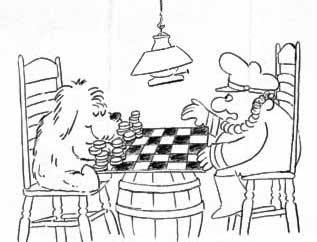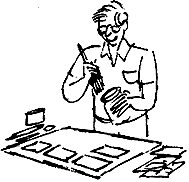 |
|
||
Who? What? Where? When? How? Why? |
|||
|
Animation is not about pretty
pictures. It's about action and reaction; about characters
and their relationship to each other.
In animation anything that you draw is a character. Simplify the characters' environment
to not confuse the purpose or direction of the story.
Introduce the locale and the characters. Basic gestures
indicate something about the characters.Villains should have
dimension. Even "good" people commit socially unacceptable
acts. We all have our strengths and weaknesses.
Design the characters to suggest
their personalities. Round, soft shapes make them cuddly. A
square is dependable; sharp angles can indicate a threat or
merely awkwardness. In Disney's Aladdin the main character
is delineated with straight lines while the genie is drawn
with curves. Why? Most stories have a three act
structure:
Act 1: Introduction...the character
wants something.
Act 2: The character attempts to
achieve his goal.
Act 3: Struggle, confrontation and
the climax where the hero achieves the goal. The end is the
completion of the events of the story. All else is
extraneous except for an action or line that frames the
ending.
|
|
|
|
|
|
|
|
|
|
|
|
|
|

 A tree can
express emotion, a line can have a nervous breakdown and a
raindrop can drown in a teacup. Establish the basic idea: The Dog
Wants To Sleep. Who is this about? What characters are
involved. What is the story you
are telling? Is it about a relationship between a dog and
his master? What universal emotions are involved? The need
for sleep? Hunger? Love? Sex? Freedom? Get to the message
early. The audience must be able to get into the
story.
A tree can
express emotion, a line can have a nervous breakdown and a
raindrop can drown in a teacup. Establish the basic idea: The Dog
Wants To Sleep. Who is this about? What characters are
involved. What is the story you
are telling? Is it about a relationship between a dog and
his master? What universal emotions are involved? The need
for sleep? Hunger? Love? Sex? Freedom? Get to the message
early. The audience must be able to get into the
story.

